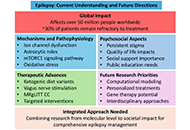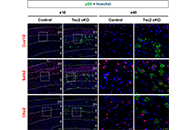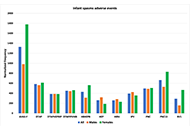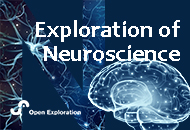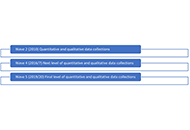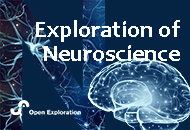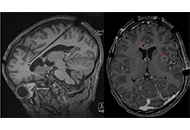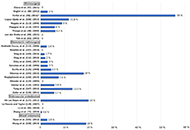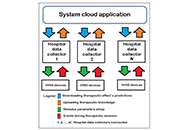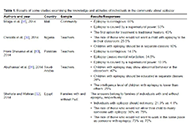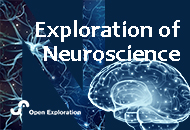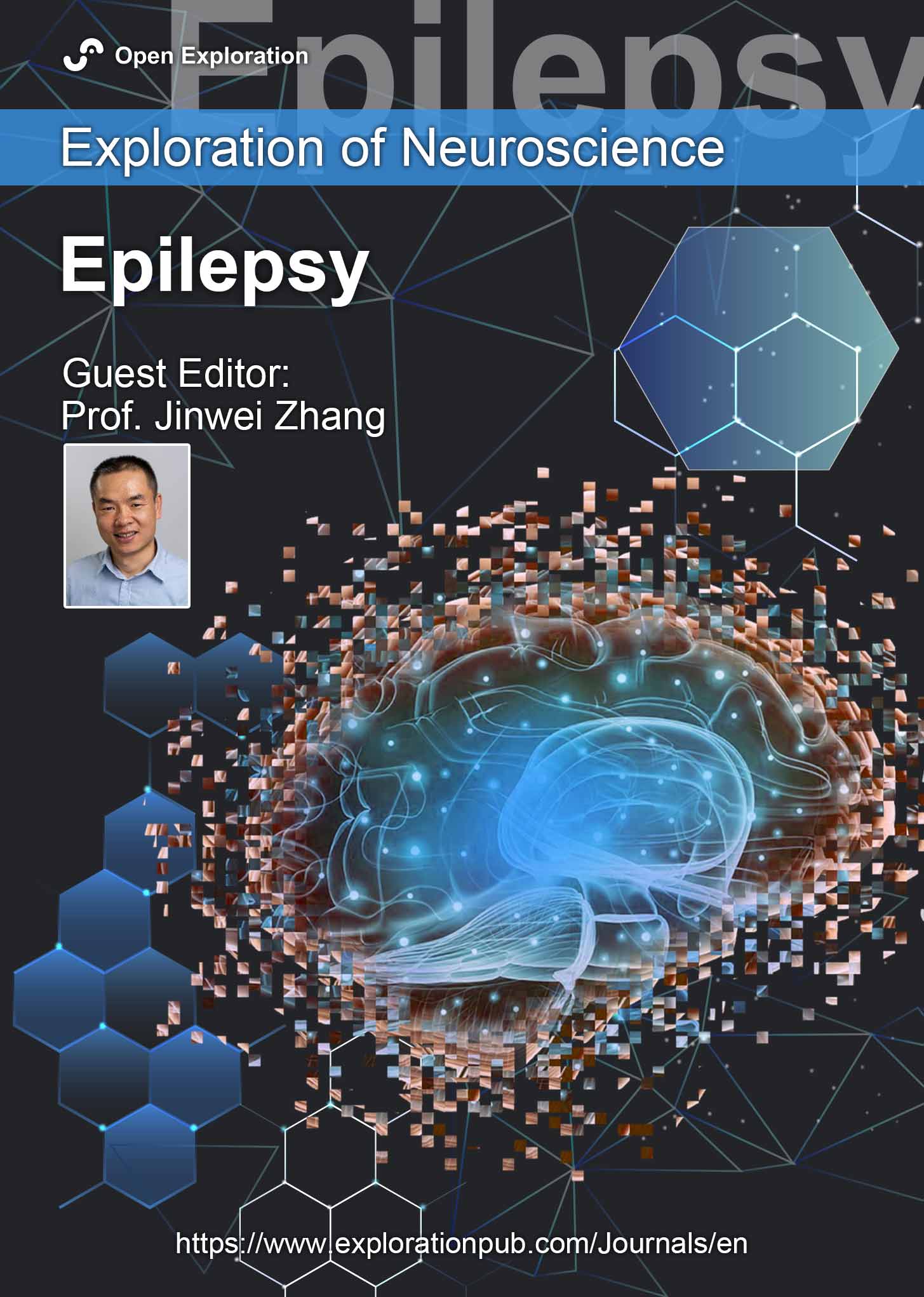
Epilepsy
Guest Editor
Prof. Jinwei Zhang E-Mail
Principal Investigator, University of Exeter Medical School, Exeter, UK
Research Keywords: Epilepsy, protein phosphorylation, kinases, ubiquitin, signalling, cellular chloride volume regulation, disease mechanism
About the Special lssue
The history of epilepsy dates back to ancient times, and evidence of the condition can be found in various cultures around the world. In ancient Greece, epilepsy was believed to be caused by the gods, and it was often referred to as the "sacred disease". The famous philosopher Plato was believed to have had epilepsy, and his seizures were described in detail by his student Aristotle [1].
In the Middle Ages, epilepsy was often associated with demonic possession, and people with the condition were often treated harshly or even killed. It wasn't until the Renaissance that the medical understanding of epilepsy began to improve, with doctors such as Thomas Willis and John Locke studying the condition and proposing that it had a physical rather than supernatural cause [2].
In the 19th century, the French physician Jean-Martin Charcot made significant contributions to the understanding of epilepsy, and his work helped to establish the condition as a neurological disorder [3]. Other influential figures in the history of epilepsy include John Hughlings Jackson, who proposed that epilepsy was caused by abnormal electrical activity in the brain [4], and Wilder Penfield, who pioneered surgical treatments for the condition [5].
Today, epilepsy is recognized as a complex neurological disorder, and over 50 million individuals worldwide are affected by epilepsy. that affects millions of people worldwide according to the World Health Organization (WHO). While the exact cause of epilepsy is not fully understood, there are several factors that are known to increase the risk of developing the condition. These include:
1). Genetic factors: Studies have shown that there may be a genetic component to epilepsy, with certain genes (e.g SLC12A5, encoding K+-Cl– cotransporter KCC2 [6]) being associated with an increased risk of developing the condition.
2). Brain injuries: Brain injuries, such as those caused by trauma, stroke, or infection, can increase the risk of epilepsy. This is because these injuries can disrupt the normal functioning of the brain and lead to the development of abnormal electrical activity.
3). Infections: Infections that affect the brain, such as meningitis or encephalitis, can cause inflammation and damage to the brain, which can lead to the development of epilepsy.
4). Developmental disorders: Developmental disorders such as autism and neurofibromatosis are associated with an increased risk of epilepsy.
5). Prenatal factors: Exposure to certain factors during pregnancy, such as maternal drug use or infections, can increase the risk of epilepsy in the child.
6). Brain tumors: Brain tumors can disrupt the normal functioning of the brain and lead to the development of epilepsy.
7). Idiopathic: In some cases, the cause of epilepsy is unknown, and it is referred to as idiopathic epilepsy.
Further, not all individuals with risk factors will develop epilepsy, and individuals without known risk factors can still develop the condition. Treatment for epilepsy typically involves medications, and in some cases, surgery or other interventions may be recommended.
There are several effective drugs that are commonly used to treat epilepsy. Some of the most commonly prescribed antiepileptic drugs (AEDs) [7] include Carbamazepine (Tegretol), Valproic acid (Depakote), Lamotrigine (Lamictal), Levetiracetam (Keppra), Oxcarbazepine (Trileptal), Phenytoin (Dilantin), Topiramate (Topamax), Gabapentin (Neurontin), Pregabalin (Lyrica), and Ethosuximide (Zarontin) etc. These drugs work by suppressing the abnormal electrical activity in the brain that leads to seizures. The choice of drug depends on the type of epilepsy, the age of the patient, and other factors such as medical history and co-existing conditions. A combination of drugs may also be prescribed in some cases. It is important to note that the effectiveness of these drugs can vary depending on the individual, and regular monitoring is necessary to ensure that the drugs are working effectively and not causing any adverse effects.
It is estimated that around 30% of individuals with epilepsy do not respond to the medication currently available [8], indicating a significant need for the development of new and innovative therapies. This suggests that more research is needed in improving our understanding of epilepsy and its causes and developing more effective treatments.
This Special Issue welcomes contributions that aim to improve our understanding of the causes of epilepsy, disease mechanisms, new therapeutic targets, novel treatment strategies, drug development, and other related areas.
References:
1. Muramoto O, Englert WG. Socrates and temporal lobe epilepsy: a pathographic diagnosis 2,400 years later. Epilepsia. Mar 2006;47(3):652-4. doi:10.1111/j.1528-1167.2006.00481.x
2. Williams AN. Thomas Willis's practice of paediatric neurology and neurodisability. J Hist Neurosci. Dec 2003;12(4):350-67. doi:10.1076/jhin.12.4.350.27910
3. Faber DP. Jean-Martin Charcot and the epilepsy/hysteria relationship. J Hist Neurosci. Dec 1997;6(3):275-90. doi:10.1080/09647049709525714
4. Hogan RE, English EA. Epilepsy and brain function: common ideas of Hughlings-Jackson and Wilder Penfield. Epilepsy Behav. Jul 2012;24(3):311-3. doi:10.1016/j.yebeh.2012.04.124
5. Leblanc R. Penfield, focal microgyria, and epilepsy. J Neurosurg. Mar 19 2021:1-7. doi:10.3171/2020.9.JNS202900
6. Tillman L, Zhang J. Crossing the chloride channel: The current and potential therapeutic value of the neuronal K(+)-Cl(-) cotransporter KCC2. Biomed Res Int. 2019;2019:8941046. doi:10.1155/2019/8941046
7. Wojcik K, Franciszek Kolek M, Dec-Cwiek M, Slowik A, Bosak M. Trends in antiseizure medications utilization among women of childbearing age with epilepsy in Poland between 2015 and 2019. Epilepsy Behav. Feb 2023;139:109091. doi:10.1016/j.yebeh.2023.109091
8. Loscher W, Klitgaard H, Twyman RE, Schmidt D. New avenues for anti-epileptic drug discovery and development. Nat Rev Drug Discov. Oct 2013;12(10):757-76. doi:10.1038/nrd4126
Keywords: Epilepsy, disease mechanisms, new therapeutic targets, novel treatment strategies, drug development
Published Articles
